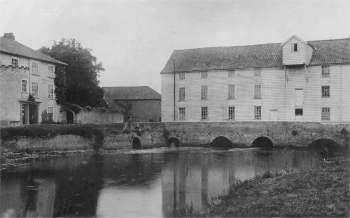 |
|
c.1911
|
|
Keswick Mill
River Yare |
 |
|
c.1911
|
|
Keswick watermill is another Domesday mill, (one of two at that time) although not on the present site until the 13th century. The river flowed through 4 arches and the mill above was built entirely of white weatherboard with a grey pantile roof. The mill house stands close by along with several outbuildings including a large dovecote. Keswick mill was built c.1760 and used to be known as the old mill but there exists a painting of an even older mill with a thatched roof. During the 20th century the mill became a listed building. The mill probably started life as a corn mill but during the 1700's it was also operating as a full mill. This activity later ceased and it once more reverted to flour milling before converting to grist milling in the 1900s century. A postmill was built just to the east and for many years the two mills were worked together until the windmill was finally demolished in the 1800s. |
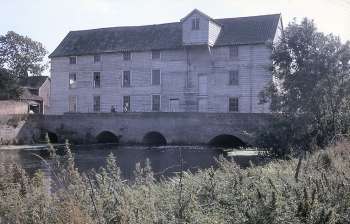 |
|
September
1967
|
|
In the year 1220, Julian de Vaux of the Manor of Keswick surrendered his rights to the watermill to the Prior of Norwich. Parts of the present mill apparently existed back in 1550 when Queen Elizabeth l visited Norwich. |
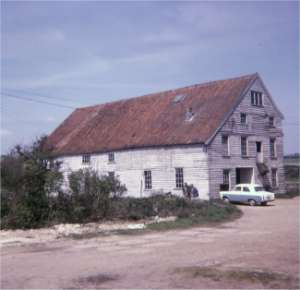 |
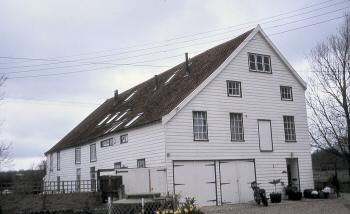 |
|
May
1967
|
11th
April 1988 |
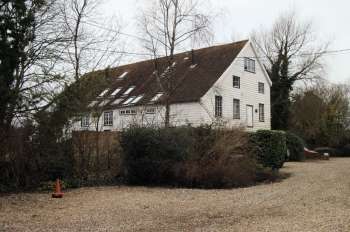 |
|
February
2003
|
|
When first built the mill operated with two waterwheels, which were later supplemented by a steam engine. The mill ground flour for some 130 years before changing to cattle feed production around 1890. At the same time one wheel and the steam engine were taken out. This must have cut the mill's potential production capacity quite dramatically. Electricity was not connected until as late as 1947, this allowed for the installation of a modern hammer mill, although the water powered stones were still used on occasions. In 1966 the water rights were sold to the River Board who instigated on the removal of the second wheel, this was done by smashing the cast iron frame with 14lb hammers before lifting out the bits. |
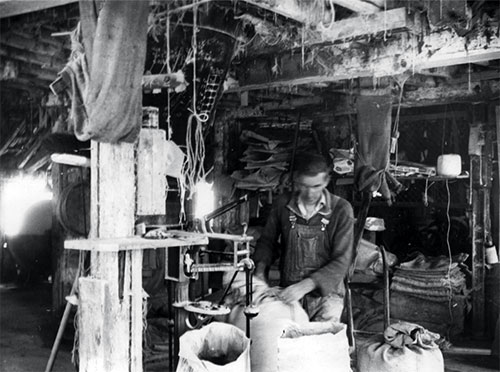 |
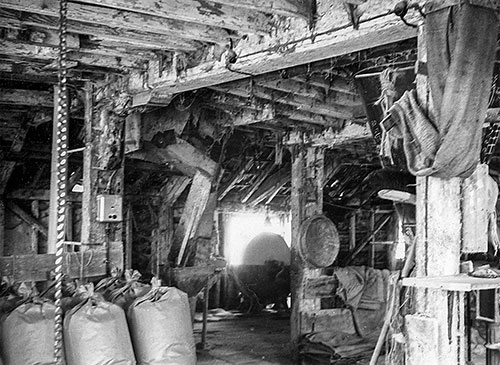 |
|
Geoffrey
Brock at work c.1960
|
Mill interior - June 1967 |
|
During the 19th century the western end of the mill was demolished along with much of the main structure, the whole thing was then rebuilt to the design seen today. However, the distinction between old and new is clearly visible inside the mill as the newer section uses cast iron supporting columns and the older section timber columns. |
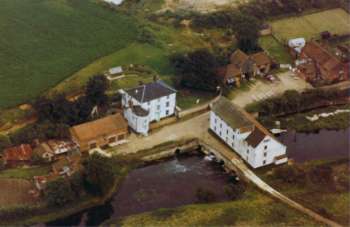 |
|
1967
|
|
Towards the middle of the twentieth century, the Gurneys owned the mill and the Brock family were millers, although by this time electric power was being used. According to an (unnamed) magazine article on 25th October 1940, Keswick mill was also used for chaff cutting and pumping water to higher land. Milling operations ceased in 1976 and by the end of the 1970s the mill was just being used for storage. |
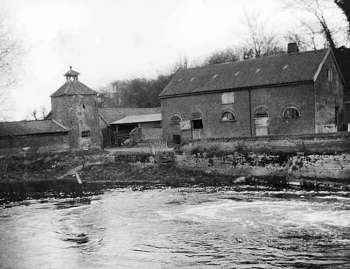 |
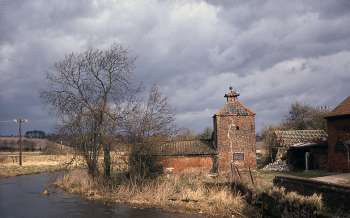 |
|
The
dovecote with the cowshed and stable block in 1940
|
The
dovecote March in 1967 |
|
To be Disposed of by public AUCTION. |
On Saturday the 28th Day of March Instant, between the Hours of 3 & 5 o'c in the Afternoon at the Kings Head in the Market Place, Norwich (for
the Remainder of the Term in the Lease, wherin about 19 years are yet unexpired). The Dwelling House & Water-Mill for the grinding of Corn & fulling & about 20 Acres of Land & also convenient Buildings thereto belonging, situate in Keswick in the county of Norfolk, about Two Miles from Norwich, late in the Occupation of Mr. Edward Nethercoat Miller & Merchant deceased. And likewise all that Windmill now standing upon the said Lands near the said Dwelling House. For Particulars enquire of Mr. William DEWING at Norwich. Norfolk Chronicle - 7th March 1772 |
|
To be Disposed of by public AUCTION. |
By Jonathan Gleed, Auctioneer On Saturday the 28th Day of March Instant, between the Hours of 3 & 5 o'c in the Afternoon at the Kings Head in the Market Place, Norwich (for the Remainder of the Term in the Lease, wherin about 19 years are yet unexpired). The Dwelling House & Water-Mill for the grinding of Corn & fulling & about 20 Acres of Land & also convenient Buildings thereto belonging, situate in Keswick in the county of Norfolk, about Two Miles from Norwich, late in the Occupation of Mr. Edward Nethercoat Miller & Merchant deceased. And likewise all that Windmill now standing upon the said Lands near the said Dwelling House. For Particulars enquire of Mr. William DEWING at Norwich. Norfolk Chronicle - 21st & 28th March 1772 |
|
All persons who are in any Ways indebted to the Estate and Effects
of EDWARD NETHERCOAT, late of Kestwick, in the County of Norfolk, Miller,
deceased, are desired to pay their respective Debts unto Mr. WILLIAM DEWING,
of Norwich, who is authorised to receive the same under the Direction
of the Court of Chancery; and such Persons who have any legal Demands
on the Estate of the said Edward Nethercoat are requested to send in the
same forthwith to the said Mr. Dewing. |
Norwich, 2nd April, 1772 |
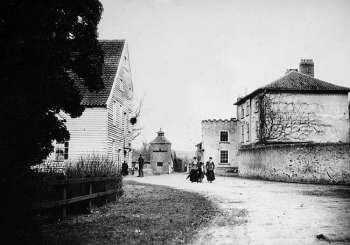 |
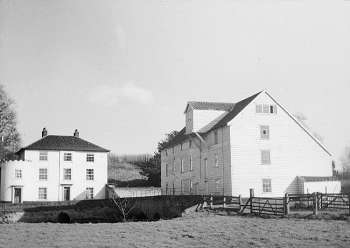 |
|
Mill and house in 1901
|
Mill and house in the 1930s |
|
A report having been propagated that the Fulling Business
would no longer be carried on at the said Mills; the Proprietors of the
said Mills think it right to acquaint the Duffield Makers that the same
will be carried on as usual; &n in order to accommodate the Trade,
other Fulling Stock will shortly be put up. |
Sunday died in an advanced age, Mrs Nethercoat, relict of the late Mr. Nethercoat of Keswick Mills. |
Sept 22, 1791 J. A. PARKINSON having engaged to take Kestwick Mills on the 10th of October next, begs leave to inform the Gentleman Farmers in general, that he shall attend at the Angel inn, Market Place, Norwich, on Saturdays, for the purpose of buying wheat. Norfolk Chronicle - 24th September 1791 |
Sunday last died, aged 22, sincerely lamented by his family and friends, Mr. Parkinson, of Keswick Mill, only son of Mr. Parkinson, an eminent miller and merchant, of Hellesdon, near this city. |
Joseph Ames Parkinson was the son of William Parkinson of Hellesdon_Water_mill and Mary Ames the daughter of Joseph Ames the late miller and business partner of William Parkinson at Hellesdon Water mill. |
Lately was taken to the Norfolk and Norwich Hospital, John Buck, servant at Keswick Mills, with a broken leg in two places, being caught by the millrope, whilst at work. Norfolk Chronicle - 10th November 1792 |
|
Thursday night last some persons broke open Keswick
Mills and stole thereout a quantity of flour in sacks, which they carried
away in a cart with two horses, which they had taken from the premises
of Mr. Denew; the cart however broke down on the road, and the thieves
were obliged to leave a part of their booty behind them; they moved the
other part upon the horses and left it in a ploughed field near Hargham,
to which place they were traced; the next morning the whole of the stolen
property was recovered, and the robbers had their labours for their pains. Norfolk Chronicle - 16th March 1821 |
September, 3rd, 1812
WHEREAS the Partnership between WILLIAM TOLL and WILLIAM BURT, Millers, Keswick, Norfolk, was his day dissolved. - All persons having any demands, are desired to send in their accounts that they may be discharged; and all persons indebted to the said partnership to pay the same immediately to Mr. William Toll. Norfolk Chronicle - 12th September 1812. |
|
FIFTY POUNDS REWARD
|
WHEREAS early this morning KESWICK MILLS, in the occupation of Mr.
W. Toll, were broken into and a quantity of FLOUR stolen thereout, Whoever
apprehends the persons who committed the said robbery shall receive a reward
of TEN POUNDS, and on Conviction the further sum of FORTY POUNDS, to be
paid by me, |
|
W. TOLL
|
| Keswick, 9th of March, 1821. |
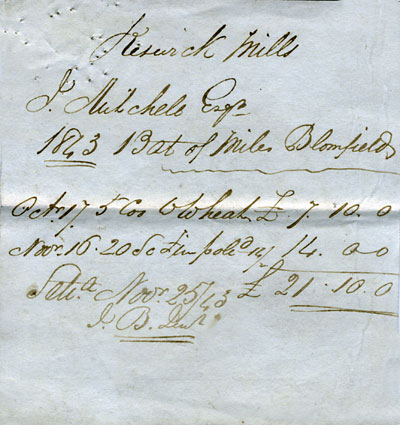 |
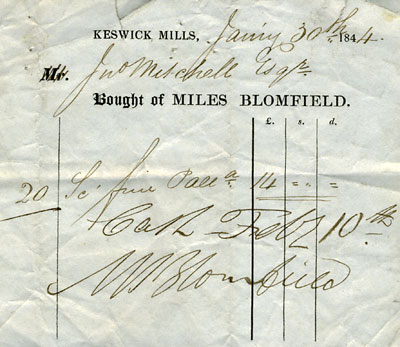 |
Bill from Miles Blomfield - 25th November 1843 |
Bill from Miles Blomfield - 30th January 1844 |
Candler Family |
Edward Candler, 1811 - 1888 was recorded as miller at Bawburgh in 1836 and 1845. His family were Quakers and several of his relatives were also millers. Lawrence Candler 1747 - 1820 was recorded at at Cringleford in 1806 (either the watermill or the postmill). His son Lawrence jnr. 1773 - 1824 was recorded at Cringleford_watermill in 1836 and again in 1845 with Horatio (his brother?). Horatio was again recorded there in 1864 and his son Horace Robert from 1883 - 1908. Lawrence and Horatio were recorded at Saxlingham_Thorpe_watermill from 1845 - 1863. In 1879 and 1883 Horace was also recorded at East_Harling_watermill, where he lived and from at least 1890 - 1896 he was also running Keswick watermill. |
Walter King was listed as a journeyman miller in the census of 1861 and was the son of Hugh King, journeyman miller at Heigham_Crook's_Place_towermill in Norwich. Walter King had moved to Sculthorpe_mill by 1871. |
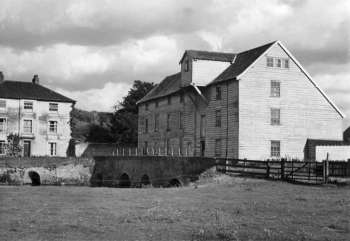 |
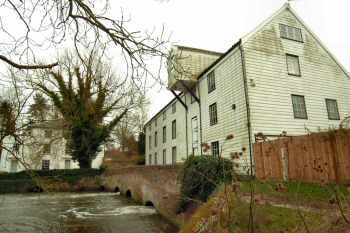 |
|
Looking north east in 1947
|
Looking
north east 4th February 2004 |
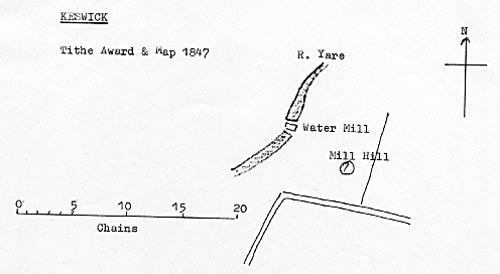 |
Tithe map 1847 - as redrawn by Harry Apling |
Tithe Award 1847 |
||||
No. 5 |
House & Mill etc. |
Part of |
2a. 0r. 18p. |
|
Walter King was listed as a journeyman miller in the census of 1861 and was the son of Hugh King, journeyman miller at Heigham_Crook's_Place_towermill in Norwich. Walter King had moved to Sculthorpe_mill by 1871. |
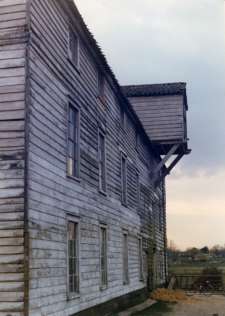 |
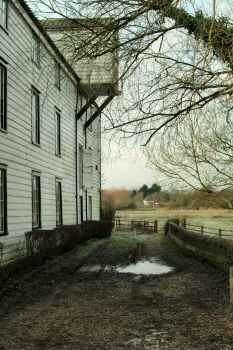 |
|
lucum
in 1977
|
lucum
in January 2004 |
The mill was built on this site about 1760 for the purpose of milling flour. Power was provided by two waterwheels; later a steam engine was added. We believe this is the second Keswick Mill; the first was sited about a mile downstream at what is known as Harford Bridge. Flour-making continued until 1890, when a change from wholemeal bread to white became popular. New roller mills with modern means of power had been built in the towns which were more suited to the production of white flour. Many of the old mills like this one carried on grinding grain for cattle food, also grinding for farmers, and in the manufacture and sale of animal food. Also at this time, one waterwheel and the steam engine were removed, and the west end of the mill was demolished and rebuilt to half its original length. About 1930 this mill, like others, began making mixed rations for pigs, poultry and cattle. In 1947 we in the mill community were connected to mains electricity, and a hammer mill grinder was obtained for the mill. This increased the grinding capacity tenfold, the millstones still being used on occasion. About 1966 the then owner sold the water rights to the River Board, when the waterwheel and millstones were removed to leave the mill totally dependent on electricity. The mill stopped production in 1976. |
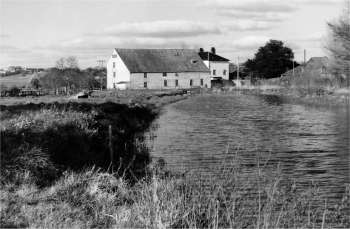 |
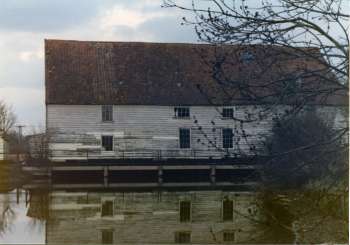 |
|
Mill dam c.1950 looking south west
|
Mill
dam in 1977 |
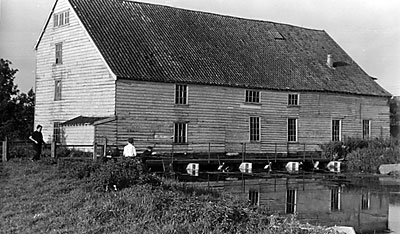 |
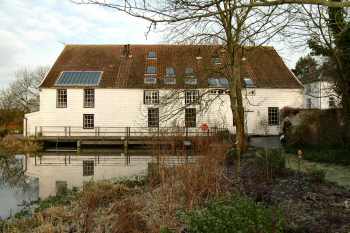 |
|
1969
|
Mill dam 3rd January 2004 |
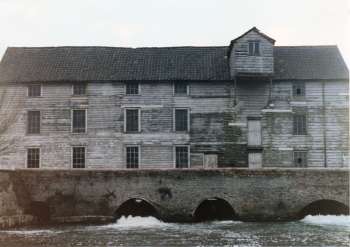 |
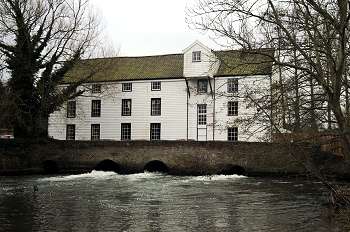 |
|
1977 - with the newer section on the right |
15th February 2003 |
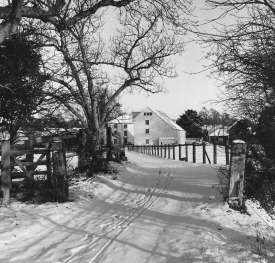 |
|
From the west in the snow of 1964
|
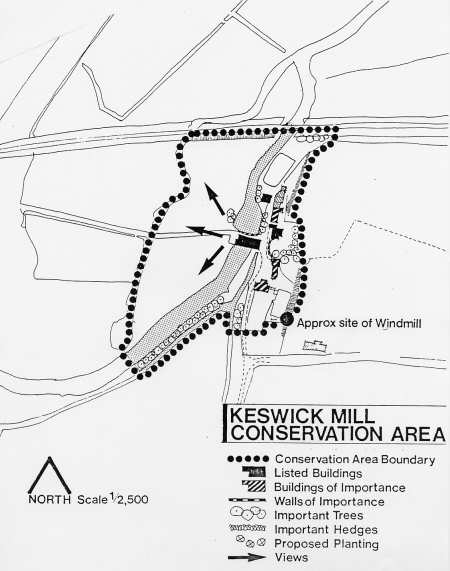 |
|
South Norfolk's Keswick Mill Conservation Area Plan July 1975
|
|
South Norfolk District Council |
|
The consortium that bought the mill from the Gurney family applied for planning permission to convert the mill into 12 residential units. This was refused and a new application was then made for 7 units, which was duly passed. In the end yet another planning application was passed to convert the mill into a single dwelling. This latter conversion was sypathetically carried out over a number of years. |
|
South Norfolk District Council |
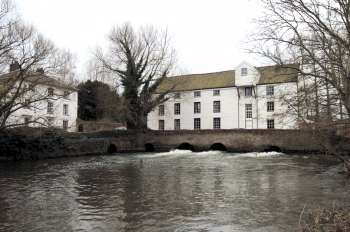 |
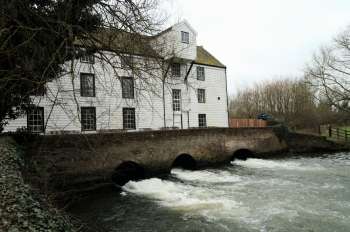 |
|
Mill and mill house February 2003
|
Tailrace 15th February 2003 |
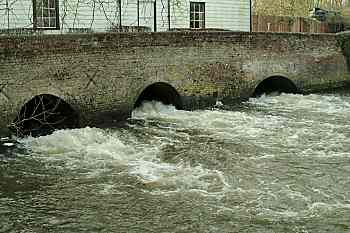 |
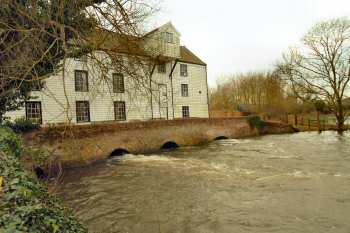 |
|
Tailrace 3rd January 2004
|
Tailrace
4th February 2004 |
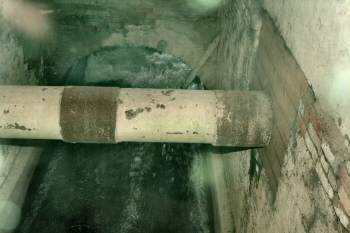 |
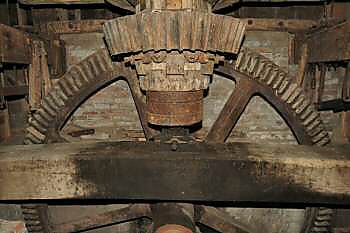 |
|
Wheel axle and wheelrace 3rd January 2004
|
Pitwheel and wallower 3rd January 2004 |
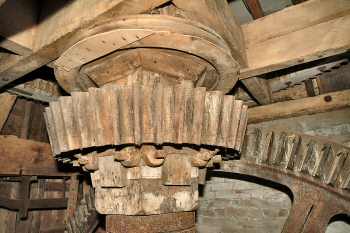 |
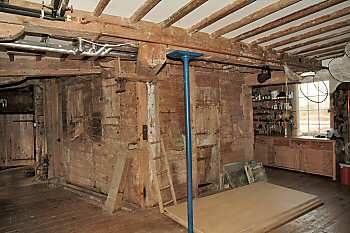 |
|
Wallower with the spur wheel above 3rd January 2004
|
Wheelhouse 3rd January 2004 |
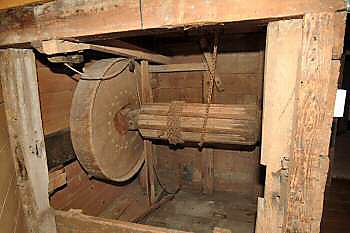 |
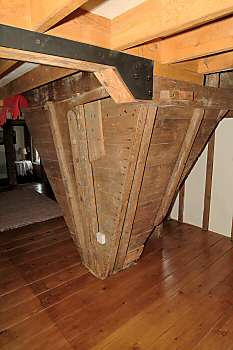 |
|
The sackhoist 3rd January 2004
|
The grain chute 3rd January 2004 |
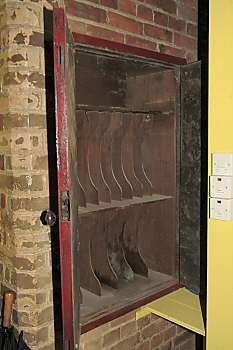 |
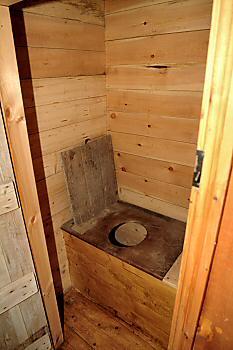 |
|||
|
The original wallsafe
|
The toilet above the millrace
|
|||
|
The original
thunderbox toilet above the millrace still remained in situ in 2004 and could legally be
used. |
|
In 1991 the mill was advertised for sale as an 8 bedroomed house along with a further annexe, double river frontage and three acres at an asking price of £300,000. |
A second watermill of Anglo-saxon origin used to stand nearby at Harford Bridge near a ford. This mill vanished in the 14th century |
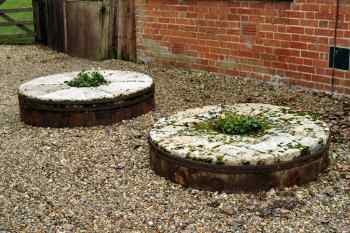 |
French burr stones near the mill 4th February 2004 |
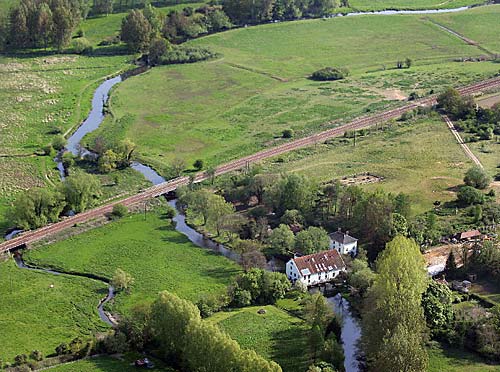 |
28th April 2007 |
|
I used to live at the railway crossing at Eaton from 1951 till I left and came to Australia in 1976, although my mother and father still lived in the cottage till my father died and my mother was rehoused into a unit at Lakenham around 1996, my sister had all so passed away and mum felt too old and frightened to stay there on her own. |
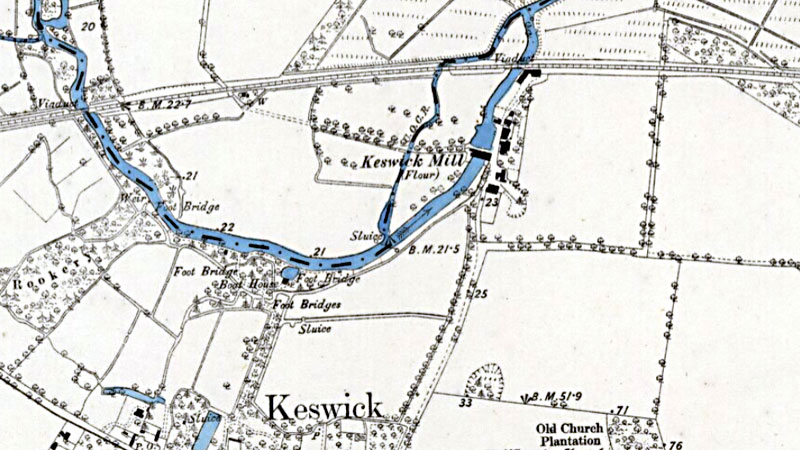 |
O. S. Map 1881 |
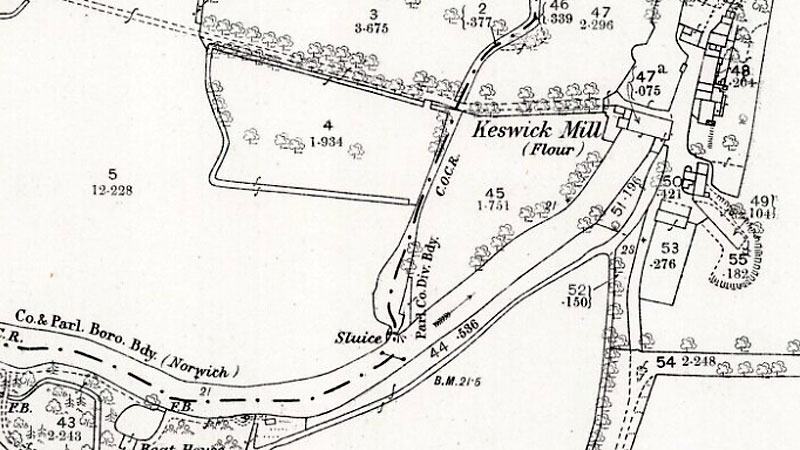 |
O. S. Map 1880 |
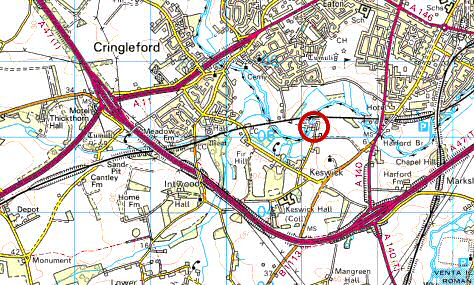 |
O.S. Map 2005 Image reproduced under licence from Ordnance Survey |
1220: Julian de Vaux of the Manor of Keswick surrendered his rights to the watermill to the Prior of Norwich
September 1867: Mill equipment advertised for sale by auction due to retirement of Miles Bloomfield
Kelly's 1912: Henry Benjamin Brock, miller 1920: Henry Benjamin Brock retired 1920: Charles Edward and William Frederick Brock (2nd & 3rd sons) took over Kelly's 1922: Charles & William Brock Kelly's 1929: Charles & William Brock c.1935: Geoffrey Charles Brock (son of Charles Edward) started work at the mill. Motor transport began 1936: William Frederick Brock left to take over Stoke Holy Cross Mill. Firm now known as C.E. Brock & Son Kelly's 1937: Charles Edward Brock Yates 1966: C. E. Brock, Keswick Mills, NOR 60D. Ph. 54117 1969: Charles Edward Brock died 1969: Geoffrey Charles Brock (name C.E. Brock & Son retained) Tel. directory 1970: C.E. Brock & Son December 1976: Mill closed c.1978: Workshop and display area for reproduction furniture
1982: First residential use 1986: Weatherboarding renewed 1991: Mill advertised for sale as an 8 bedroomed house 1992: Mr & Mrs Pearson - Mrs Pearson ran needlework courses and the mill featured in several TV programs June 2000: Mill advertised for Sale by FPD Savills for a guide price of £575,000 2001: Mill owned by a Dutch family 2018: David & Juju Vail |
If you have any memories, anecdotes or photos please let us know and we may be able to use them to update the site. By all means telephone 07836 675369 or
|
| Nat Grid Ref TG 21170514 | Copyright © Jonathan Neville 2004 |